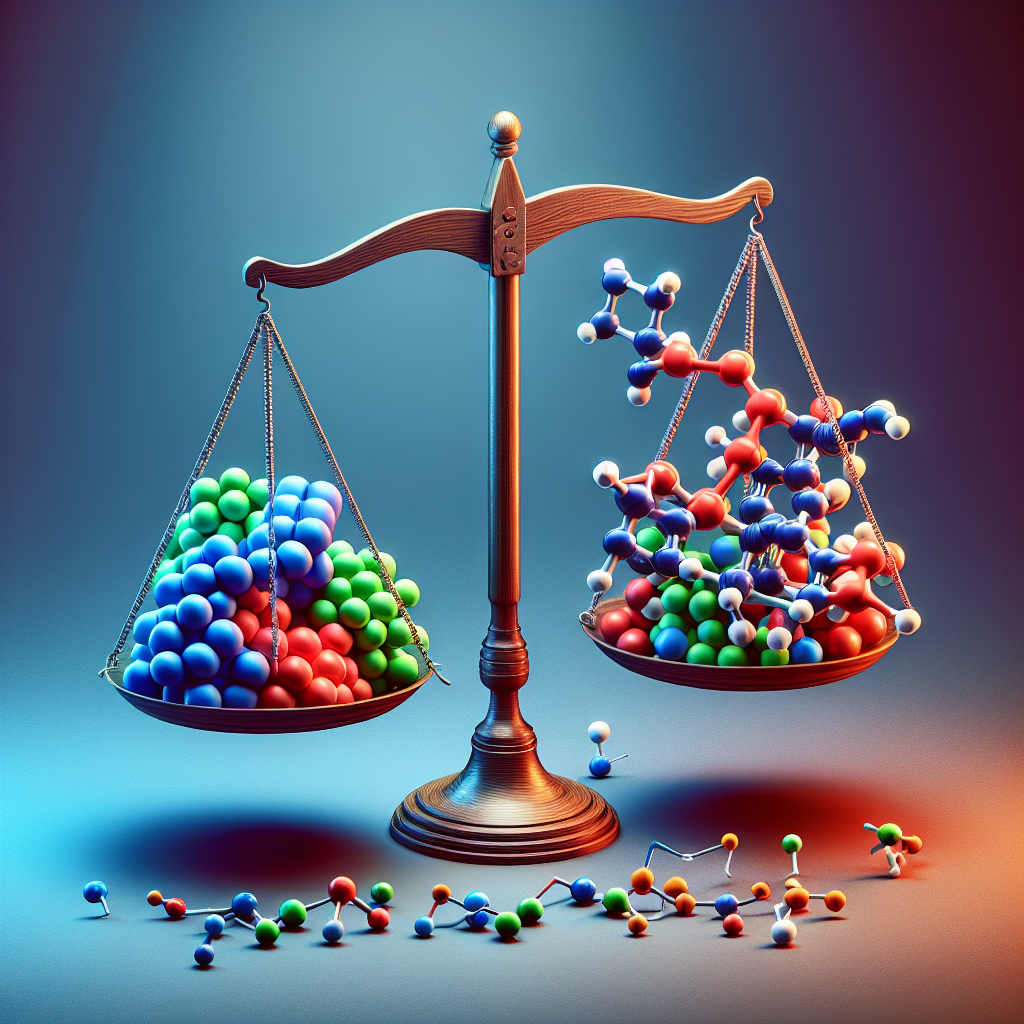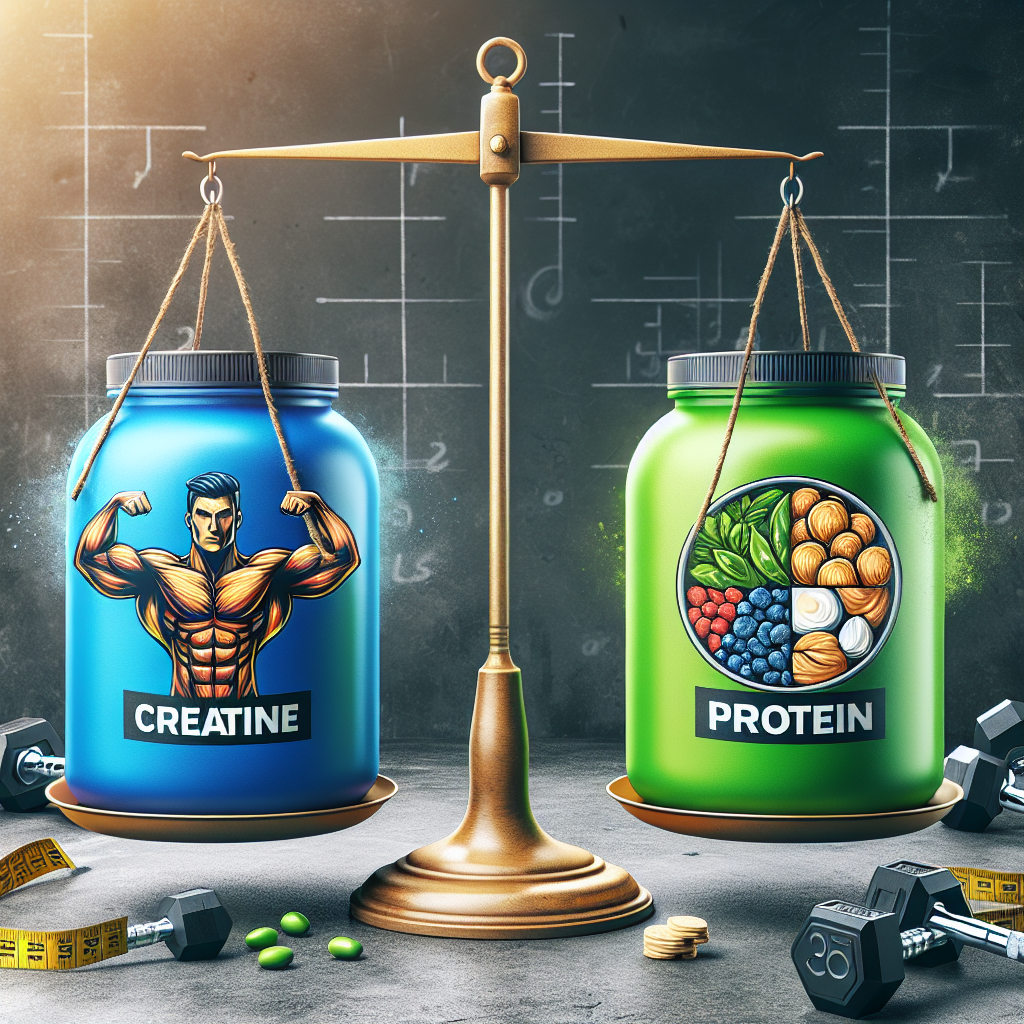Creatine vs Protein: What They Do, How They Differ, and Which One You Need
Overview
– Creatine and protein are both popular sports supplements, but they serve different primary purposes.
– Creatine mainly boosts high-intensity performance and indirectly supports muscle gain by letting you train harder.
– Protein provides the building blocks for muscle repair and growth and directly supports recovery and body composition.
How they work
– Creatine: Increases intramuscular phosphocreatine, improving rapid ATP regeneration during short, intense efforts (lifting, sprints). This often leads to higher training volume, strength gains, and a modest increase in lean mass, partly from increased muscle water content.
– Protein: Supplies essential amino acids, especially leucine, to stimulate muscle protein synthesis. Adequate protein supports recovery, growth, satiety, and overall body composition.
Strength, muscle, and performance
– Creatine
– Best for maximal strength, power, repeated sprints, and explosive efforts.
– Typically yields faster strength gains and a 1–2 kg increase in lean mass over weeks to months, especially when beginning supplementation.
– Water retention inside muscles is common initially; it’s not fat gain.
– Protein
– Essential for building and maintaining muscle; effectiveness depends on total daily intake.
– Enhances gains if your diet is below optimal protein levels; benefits are smaller if you already meet your needs.
– Also supports satiety during fat loss and reduces soreness by improving recovery.
Who benefits most
– Creatine: Strength/power athletes, team sports with repeated sprints, novices starting resistance training, vegans/vegetarians (lower baseline creatine stores), and older adults seeking strength and function.
– Protein: Anyone who struggles to meet protein needs through food, people on calorie-restricted diets, those with higher protein needs (athletes, older adults), and individuals on plant-based diets who want convenient, high-quality protein.
Forms and quality
– Creatine
– Creatine monohydrate remains the gold standard for efficacy, safety, and cost. Other forms are not consistently superior.
– Look for third-party tested products.

– Protein
– Whey concentrate: economical, fast-digesting; may bother those sensitive to lactose.
– Whey isolate: lower lactose, higher protein per gram, usually pricier.
– Casein: slow-digesting; helpful before long gaps between meals or before sleep.
– Plant proteins (pea, soy, rice, blends): effective, especially when blended to improve amino acid profile; may require slightly larger servings to match leucine content.
Dosing and timing
– Creatine
– Standard: 3–5 g per day, any time; with a meal can improve uptake.
– Optional loading: 20 g/day split into 4 doses for 5–7 days, then 3–5 g/day maintenance. Loading saturates muscles faster but isn’t required.
– Timing is flexible; consistency matters more than when you take it.
– Protein
– Daily intake target for active individuals: roughly 1.6–2.2 g/kg body weight (0.7–1.0 g/lb).
– Per meal: about 0.25–0.4 g/kg, aiming for 2–3 g of leucine (often 20–40 g of high-quality protein).
– Distribute across 3–5 meals; one serving near training can help, but total daily protein is the priority.
Safety and side effects
– Creatine
– Generally safe for healthy individuals over the long term at recommended doses.
– Possible mild GI upset if large doses are taken at once; splitting doses helps.
– Increases body weight via water retention in muscle; not harmful.
– Not shown to damage kidneys in healthy people; those with kidney disease should consult a clinician.
– Protein
– Safe for healthy kidneys and liver when within recommended ranges.
– Potential GI discomfort if lactose intolerant (choose whey isolate or non-dairy proteins).

– Watch total calories; liquid calories can add up during weight loss phases.
Body composition and weight changes
– Creatine: Expect a small, quick increase in scale weight, mostly from intracellular water; can enhance lean mass accrual via better training performance.
– Protein: Helps preserve or build lean mass; supports fat loss by increasing satiety and thermic effect of food.
Endurance considerations
– Creatine: May help with short bursts (hills, sprints, finishes) but added water weight can be a drawback for some endurance events.
– Protein: Important for recovery and maintaining lean mass during high-volume training.
Cost and convenience
– Creatine: Very low cost per day, tasteless, easy to add to any drink.
– Protein: Cost varies by type and brand; convenient way to hit protein targets when whole food isn’t practical.
Common myths
– Creatine cycling is not necessary.
– Creatine does not cause dehydration or cramps in healthy users when adequately hydrated.
– More protein isn’t always better; once daily needs are met, extra provides diminishing returns for muscle building.
How to choose
– Choose creatine if your goal is to lift heavier, sprint faster, or improve explosive performance, or if you want a low-cost supplement that can nudge strength and lean mass upward.
– Choose protein if you struggle to meet daily protein targets through food, want faster recovery, better satiety during cutting, or convenient nutrition around workouts.
– Many people benefit from using both: creatine for performance, protein to meet daily protein needs.
Quick-start recommendations
– Creatine monohydrate: 3–5 g daily, any time, consistently.
– Protein powder: Pick one that fits your diet and tolerance; use it to hit a daily target of 1.6–2.2 g/kg body weight, split across meals.
Bottom line
– Creatine and protein are complementary, not interchangeable. Creatine boosts high-intensity performance and indirectly supports muscle gain, while protein directly supplies the materials your body needs to build and maintain muscle. If budget allows, using both strategically often yields the best results.

